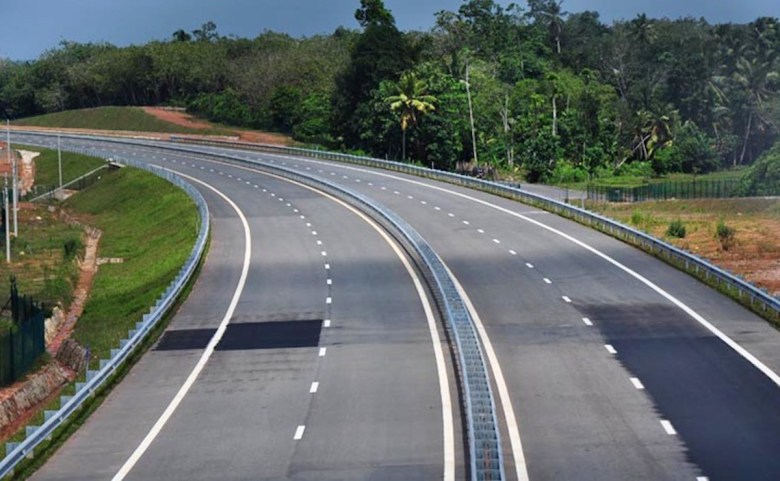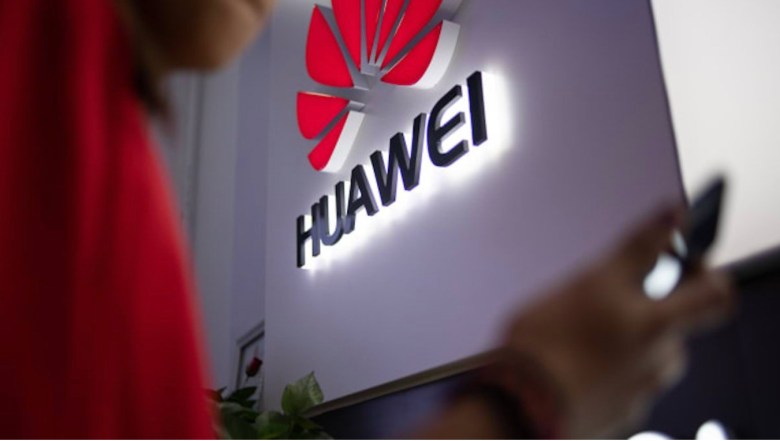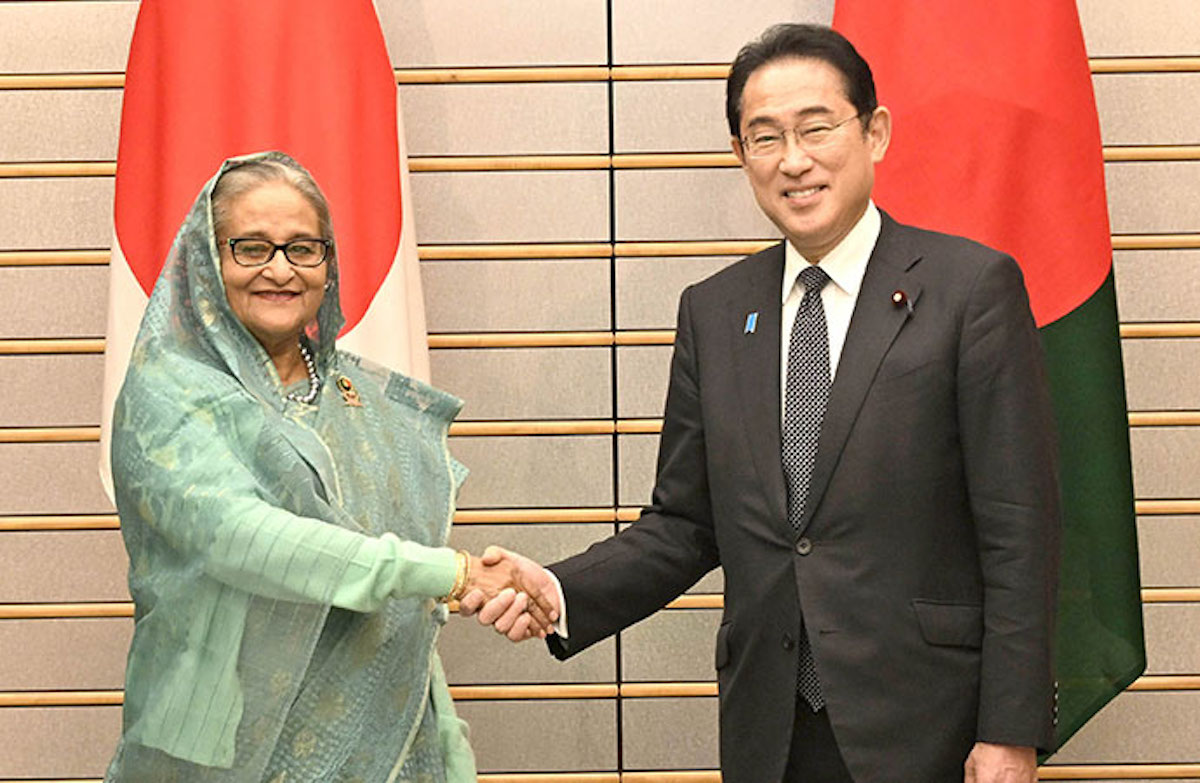Japan and Bangladesh are ready to start negotiations aimed at finalizing an Economic Partnership Agreement by the end of 2025.
That deadline precedes the South Asian nation’s currently scheduled 2026 graduation from the UN’s list of least developed countries and consequent loss of its exemption from developed nations’ tariffs.
When the US government looks at Bangladesh, it sees a faltering democracy where the recent elections failed to meet its own high standards. When Japan looks at Bangladesh, it sees a strategically situated nation of more than 170 million people growing at about 6% per year and with a GDP larger than the combined GDPs of the Philippines, Vietnam and Malaysia.
Bangladesh also has substantial economic ties with China and Russia, a fact that excites the Western urge to impose sanctions but convinces Japan to move ahead with the expansion of trade and cooperation in infrastructure development.
This is being done in cooperation with India. Following Japanese Prime Minister Fumio Kishida’s visit to New Delhi in March 2023, the Japan International Cooperation Agency (JICA) agreed to provide Bangladesh with new loans amounting to ¥165 billion (US$1.12 billion at the current exchange rate) for the Matarbari Port Development Project, the Chattogram-Cox’s Bazar Highway Improvement Project and a small railway construction project north of Dhaka.

JICA is also active in northeastern India, financing the construction and improvement of hundreds of kilometers of roads, including the highway from Tripura to Chattogram.
The Matarbari project involves dredging a deep-water port (the first in Bangladesh) and building a power plant and an industrial park on the Bay of Bengal in the southern district of Cox’s Bazar.
Improving the road from there to Chattogram (also called Chittagong) will facilitate the transport of goods to and from Dhaka and other parts of Bangladesh and from the states of northeastern India. The power plant is being built by Sumitomo Corp, Toshiba and IHI. The deep-water port is expected to be opened in 2027.
In April, the Third India-Japan Intellectual Conclave was held in Agartala, the capital of the Indian state of Tripura, to discuss ways of realizing the commercial potential of the region encompassing northeastern India and Bangladesh. The deputy foreign ministers of India and Bangladesh, the chief minister of Tripura and the Japanese ambassador to India attended the event.
Later in April, Bangladeshi Prime Minister Sheikh Hasina visited Japan for a meeting with Kishida. In a joint statement, they announced their decision to upgrade the “Comprehensive Partnership” that was established between the two countries in 2014 to a “Strategic Partnership” as a guiding principle for the next 50 years.
The two leaders also declared their “commitment to realizing a free and open Indo-Pacific based on the rule of law, where the rights, freedoms and sovereignty of all countries, regardless of size or power, are protected by international law, rules and norms.”
On the economic side, they emphasized the importance of high-quality infrastructure supported by “transparent and fair” finance to the development of Bangladesh and the surrounding region. The logistic, energy and industrial aspects of the Matarbari deep sea port project were mentioned specifically, as was cooperation in information and communications technology.
The two expressed their satisfaction with the progress made under the Bay of Bengal Industrial Growth Belt initiative and the opening of Dhaka Mass Rapid Transit Line 6, the first electric train in Bangladesh, on the 50th anniversary of the establishment of diplomatic relations in 2022. The construction of Line 6 was supported by JICA.
In the area of national security, they “welcomed recent frequent port calls at Chattogram by vessels of the Japan Maritime Self-Defense Force [as well as] the high-level mutual visits of the Japan Self-Defense Forces and Bangladesh Armed Forces [and] the commencement of negotiations on an Agreement concerning the Transfer of Defense Equipment and Technology.”
Japan will also offer Bangladesh its expertise in cybersecurity.
Bypassing election controversy
On January 7, Bangladesh Prime Minister Sheikh Hasina won a fourth consecutive term in office as her Awami League won 234 of 300 elected seats in parliament. (The remaining 50 seats are reserved for women selected by the elected members). The opposition Bangladesh Nationalist Party boycotted the poll after violent street demonstrations in which many of their people were killed and thousands arrested.
Diplomats from India, Singapore, the Philippines, China and Russia visited Hasina at her residence to convey their congratulations, but the US government said the election was “not free and fair” while the UK criticized “the acts of intimidation and violence that took place prior to and during the campaign period.” The EU said it “regrets that not all major parties participated in this election” and called for “a timely and full investigation of all reported election irregularities.”
The US has imposed visa restrictions on Bangladeshi citizens it accuses of undermining the democratic process, including law enforcement officials and members of both the ruling and opposition parties. The UK and EU have not done anything yet, but there is concern that they and the US, might impose punitive barriers to trade. Most of Bangladesh’s exports, which consist primarily of clothing, go to Europe and the US.
On January 22, during a visit to Dhaka, Japan’s Minister for Economy, Trade and Industry (METI) Yasutoshi Nishimura told Bangladeshi State Minister for Foreign Affairs Shahriar Alam that Japan would like to conclude an economic partnership agreement with Bangladesh in order to put a mutually favorable tariff regime in place as Bangladesh becomes a middle-income country. This is not an indirect comment on the election, but the continuation of a longstanding policy.
Japan has been the largest provider of Overseas Development Assistance (foreign aid) to Bangladesh since its declaration of independence in 1971, but the relationship was kicked into high gear in 2014 by Japanese Prime Minister Shinzo Abe, the originator of the concept now called the Free and Open Indo-Pacific.
In May of that year, the two countries reached agreement on the Japan-Bangladesh Comprehensive Partnership at a summit meeting held in Tokyo, when Prime Minister Hasina met with Abe, Kishida, who was then foreign minister, and Taro Aso, minister of finance, a former prime minister and president of the Japan-Bangladesh Parliamentary Friendship League.
The president of the Japan International Cooperation Agency (JICA) then visited Bangladesh in June to discuss both projects for which foreign aid agreements had already been signed and future projects including the construction of a Bay of Bengal Industrial Growth Belt running southeast from Dhaka towards Myanmar.
Abe visited Bangladesh in September 2014 to discuss bilateral security cooperation, development aid, trade and investment with Prime Minister Hasina. Executives from 20 major Japanese companies including engineering and heavy machinery makers MHI and IHI and Shimizu Construction accompanied Abe.
Aiming to reduce dependence on textiles and move up the manufacturing value chain, Bangladesh was already promoting the upgrade of port and water control facilities, roads, railways, bridges, power generation and other infrastructure.
Japan was hoping to increase trade and win more infrastructure contracts by continuing its already substantial foreign aid. Since then, as the Japan External Trade Organization (JETRO) pointed out last year, the number of Japanese companies with operations in Bangladesh has roughly doubled to about 340.
Balancing China and Russia ties
The People’s Republic of Bangladesh (the country’s official name) has been a participant in China’s Belt and Road Initiative since 2016. Numerous projects have been undertaken, including the construction of roads and bridges, railways, seaport and airport facilities, electric power plants, water and sewerage systems and an industrial park.
Assessments of these projects range from warnings about debt-trap diplomacy to praise for avoiding it, but the Belt and Road Initiative in Bangladesh Exhibition held in Dhaka in September 2023 was reported to have generated a positive response.
China is Bangladesh’s largest trade partner and nearly 700 Chinese companies are operating in Bangladesh. China is also the largest supplier of military equipment to Bangladesh. Huawei, which has been operating in Bangladesh since 1998, is now working with state-controlled mobile telecom operator Teletalk to upgrade 4G networks around the country and introduce 5G.

Russia supplies Bangladesh with grain, fertilizer, machinery, metals fuel oil and, starting last October, uranium for the first of two nuclear reactors supplied by Rosatom, the Russian state atomic energy corporation. Ninety percent of the $12.7 billion project, which is located west of Dhaka at Rooppur, is funded by a loan from the Russian government. Payments will be made in Chinese yuan.
Most of Bangladesh’s exports, which consist primarily of clothing but also include jute and seafood, go to Europe and the US. Its imports, including cotton, oil products, machinery, steel and food, come primarily from China, India and Singapore.
Bangladesh runs a constant trade deficit, with imports of goods and services exceeding exports by about 60%. Japan is one of its medium-sized trade partners, but its largest supplier of infrastructure design and construction services.
For Bangladesh, cooperation with Japan reduces dependence on China while mollifying India, the US and Europe. This balancing act will become even more important when the country is no longer protected from tariffs by least-developed country status.
Follow this writer on X: @ScottFo83517667


